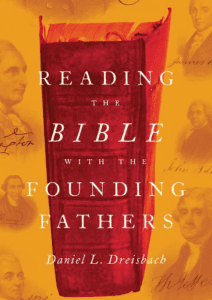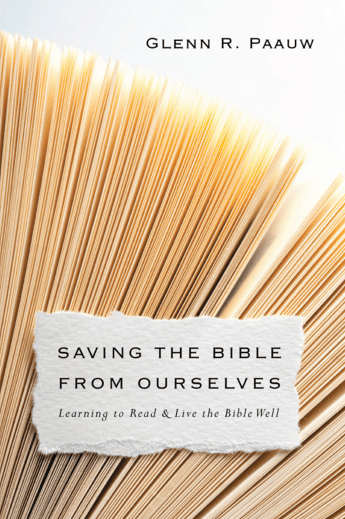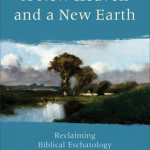 Last Thursday I put up a post The Garden in Ancient Context looking at the discussion in John Walton’s background commentary on Genesis (Zondervan Illustrated Bible Backgrounds Commentary). The first comment on this post made a point that comes up frequently in the discussion of the historicity of the Genesis account of origins (Gen 1-11).
Last Thursday I put up a post The Garden in Ancient Context looking at the discussion in John Walton’s background commentary on Genesis (Zondervan Illustrated Bible Backgrounds Commentary). The first comment on this post made a point that comes up frequently in the discussion of the historicity of the Genesis account of origins (Gen 1-11).
Not sure this is really all that surprising. There were many flood myths in the ancient world because there was an actual flood. Perhaps there were also a variety of snake myths because there was also a historic event in which a crafty serpent was involved, the memory of which lingered throughout the ancient world.
Some discussion continued along this line with one of the commenters pointing out that “there were likely a number of major events towards the end of the previous Ice age, which incidentally coincided with the dawn of civilization in the Near East. But the term “major” does not imply “global”.” The flood myths do have historical precedence in significant floods.
There are at least four major lines of evidence, however, that I find argue against a view of Genesis that makes the story of origins as related in Genesis the original tale of material origins (by divine revelation) with all else derivative shadows of the truth. The argument that we have flood myths because there was a global flood exactly as related in Genesis 6-9, that the snake myths are memories of a real snake, or that the palace and temple gardens of the ancient Near East were attempts to recreate Eden doesn’t really make the most sense out of the evidence we have.
The four lines of evidence:
(1) The nature of the biblical text itself. Without moving to any external source (but relying, of course, on translation) the text itself raises many significant questions about the purpose and intent of the original writers and editors, and of God in preserving the text we have for the church.
(2) The archaeological and historical evidence from the ancient Near East. The context of the ancient Near East adds insight into the message of the text. This can provide serious challenges for certain traditional interpretation of the text, however. Most importantly for Genesis 1-11, we lose the depth of insight this ANE context provides when we flatten the text into a literal history as is done in the most young earth shaping of the story.
(3) The way New Testament authors use the Old Testament text. This is not always consistent with the way we expect the Bible to be studied and used today. While I don’t think this means we should (often) copy their methods – it does mean that our methods and assumptions do not mirror exactly what Paul meant when he wrote in the second letter to Timothy that the Holy Scriptures, … are able to make you wise for salvation through faith in Christ Jesus. and that all Scripture is God-breathed and is useful for teaching, rebuking, correcting and training in righteousness. Thus this line of evidence provides an important caution to our reliance on method, and it lends insight into what scripture is and how it is God-breathed and useful.
(4) Science. This includes scientific understanding of the origin of the universe, the age of the earth, plate tectonics, meteorology, the fossil record, the evolution of life on the earth, the number of species of life present on the earth, and the evidence for the development and distribution of human culture across the earth. I place this last because there is often a suggestion that science is driving the need to reexamine Genesis. If we would just stop bowing at the altar of modern science we would be content with the “traditional” reading of Genesis 1-3. Certainly science plays a role, but it isn’t the only factor. For many, it isn’t even the major factor.
Today I would like to look just briefly at the first line of evidence, the internal evidence of the Old Testament. There is an impression among many Christians today that the Bible presents a clean linear story of God at work in the world, recorded with divine perfection. Zondervan has gone so far as to put out The Story, NIV: The Bible as One Continuing Story of God and His People with selections from scripture streamlining the story of events and people from creation to the church, ending with a glimpse at the future. The typical Sunday school approach of short stories with moral lessons for 21st century life, or the typical sermon selection of a few verses here or there attached to the lesson for the day can can mesh with this view. Books like The Story and typical Sunday School curricula serve an important role in introducing people to the Bible, but they can also hide the nature of the Bible we have.
When the Bible is read or heard in large chunks straight through, without skipping over the boring parts (like the purity laws, the names, the numbers, the first 8 chapters of 1 Chronicles, and much of Ezra and Nehemiah) or the unintelligible parts (like a good bit of Judges and Ezekiel – for different reasons ) a somewhat different picture emerges. And new questions are raised, questions like “what is the significance of 40 years?” and “why don’t we place more emphasis on care for the poor, the widows, and the orphans?” … given how important this obviously was (and is) to God.
Genesis along with the rest of the Pentateuch is an excellent case in point. Although the traditional view has Moses the author of the Pentateuch, written before the conquest of Canaan, it doesn’t read like a text penned during the Exodus. It reads like a text assembled and edited at a later date using earlier sources. The entire text is framed as a third person account – and this includes not just Genesis (which would be understandable) but the books taking place during the lifetime of Moses and during the Exodus as well. The internal evidence points to a text shaped and formed for a theological purpose, in response to the exile, using older oral and written sources. Pete Enns has spelled a good deal of this out in The Evolution of Adam and in Genesis for Normal People, the latter written with Jared Byas.
Deuteronomy, for example, is framed as a third person account about Moses and contains references as though it is written much later. Passages like the following have raised questions:
34:6, 10-12 He buried him in Moab, in the valley opposite Beth Peor, but to this day no one knows where his grave is. … Since then, no prophet has risen in Israel like Moses, whom the LORD knew face to face, who did all those signs and wonders the LORD sent him to do in Egypt—to Pharaoh and to all his officials and to his whole land. For no one has ever shown the mighty power or performed the awesome deeds that Moses did in the sight of all Israel.
As early as 400 AD Jerome commented on Deut. 34 and proposed that “to this day” in v. 6 referred to the time of Ezra during the return from the Babylonian exile.
Other parts of the Pentateuch also point to a late date for the final form of the edited text. Enns points to a 12th century rabbi Abraham Ibn Ezra who noted a number of issues in the Pentateuch that suggest a relatively late date for the edited text. Genesis 12:6 is one such example noted by Ibn Ezra:
Abram traveled through the land as far as the site of the great tree of Moreh at Shechem. At that time the Canaanites were in the land.
The specification that the Canaanites were in the land suggests that the text was edited and compiled at a time when the Canaanites were no longer in the land. According to Enns “Ibn Ezra seems to have thought that a date of authorship from around the time of David would explain at least some of what the Pentateuch says.” (p. 17)
Another example is found in Genesis 36:31: These were the kings who reigned in Edom before any Israelite king reigned. Surely this was written sometime after the monarchy was instituted, that is some time after Saul and David.
The difficulties with a traditional view of the origin and authorship of the Pentateuch go beyond these editorial comments reflecting a later time and the third person narrative. There are many doublets (i.e. two versions of the same story) within the text of the Pentateuch as we have it. The two creation narratives in Genesis 1 and 2, the covenant with Abraham in Gen 15 and 17; wife passed off as sister in Gen 12 (Abraham and Pharoah), 20 (Abraham and Abimelek) and 26 (Isaac and Abimelek); Exod. 3 and 6; and Exod. 17 and Num. 20 are examples. The stories of Abraham, Isaac and Abimelek suffer from the further complication that the Philistines did not settle in Canaan until after the patriarchal times, yet Abimelek returned to the land of the Philistines in Gen 21:32-34 and is described as the king of the Philistines in Genesis 26.
Some of the difficulties are apparent to the lay reader, but others are only apparent to the scholar who digs more deeply into the text. Enns points out that the Hebrew in which the Pentateuch was written is a form of the language that dates from 800 BC or later. The anachronisms (like Philistines) and the references to times of old (when Canaanites were in the land), and the inclusion of doublets, make sense if the story is being told from this far later time, 800 BC or later, using oral history and written records.
If we wish to read Genesis for all it is worth, we need to take it as it is, not make it into what we think it should be. The Old Testament, including Genesis, is a theological document and serves a theological purpose. It was compiled and edited into the form we have after and in response to the exile, using older sources. It contains history and story and poetry and prophecy and lists of people and purity codes and laws of conduct. Through all of this the Old Testament wrestles with and answers questions of identity for Israel … Who are we? Who is our God? For Christians, including Paul, the story of Israel and the questions about God find their culminating answer in the incarnation, life, death, and resurrection of Christ. “But as for you,” Paul writes to Timothy, “continue in what you have learned and have become convinced of, because you know those from whom you learned it, and how from infancy you have known the Holy Scriptures,” i.e. our Old Testament, “which are able to make you wise for salvation through faith in Christ Jesus.”
In this context the creation narratives of Genesis 1 and 2 make powerful contributions. Our God, YHWH, is the Creator of the cosmos. The earth is shaped and formed as his dwelling with function and purpose. This is a majestic image in its own right and is a response and critique of other ancient Near Eastern views of creation and of the sun, moon, and stars as divine. The garden in Genesis 2 is a powerful image of the place and purpose of humanity. Adam and Eve are placed into a garden adjoining God’s residence in the same way that a garden of a palace or temple adjoins the palace. Humans were created and placed in the Garden for union and fellowship with God. The theological significance of the passage cannot be stronger.
But Adam and Eve fail to live in obedience to God, succumb to the temptation of the serpent (who is already in the Garden!) and are turned out of the Garden, away from the place where as N.T. Wright puts it, God’s space and man’s space interlocked and interacted. Failure and exile is a pattern that repeats throughout the Old Testament. Jesus, Paul tells us, through his life, death, and resurrection, has ended the repeats … although we wait in a state of already, not yet.
It isn’t a low view of scripture that leads to questions concerning the intended message of Genesis 1-3. It isn’t bowing to the altar of science that results in dissatisfaction with many of the traditional or young earth creationist interpretations of the text. It is a desire to read Genesis for all it is worth that leads us deeper into the text in its historical and biblical context.
What is the purpose of Genesis?
Does it take away from the text to look at it as a theological document constructed for a purpose?
What is the significance of the Garden and the snake?
If you wish to contact me directly you may do so at rjs4mail [at] att.net.
If interested you can subscribe to a full text feed of my posts at Musings on Science and Theology.











